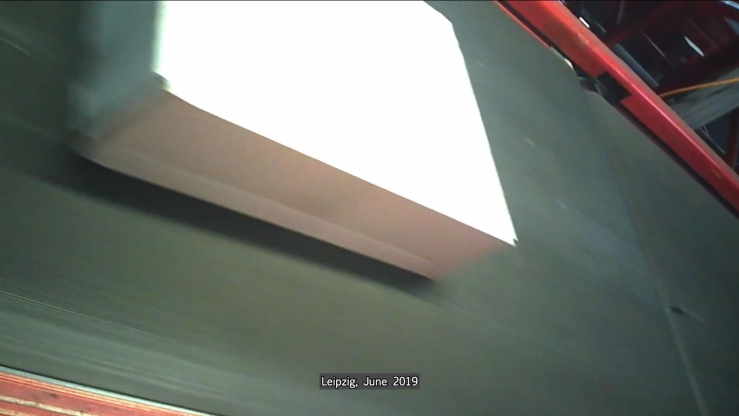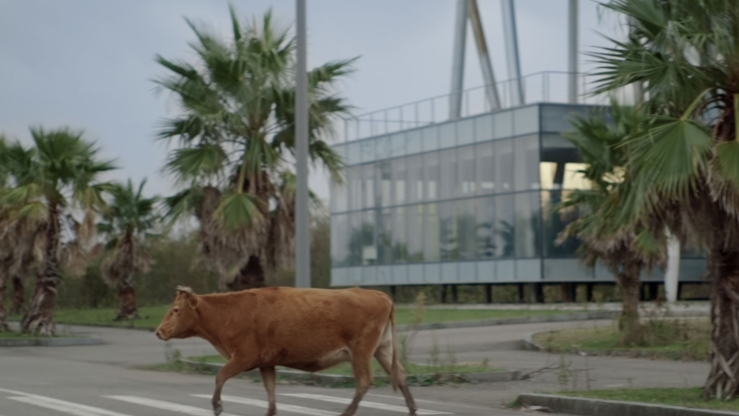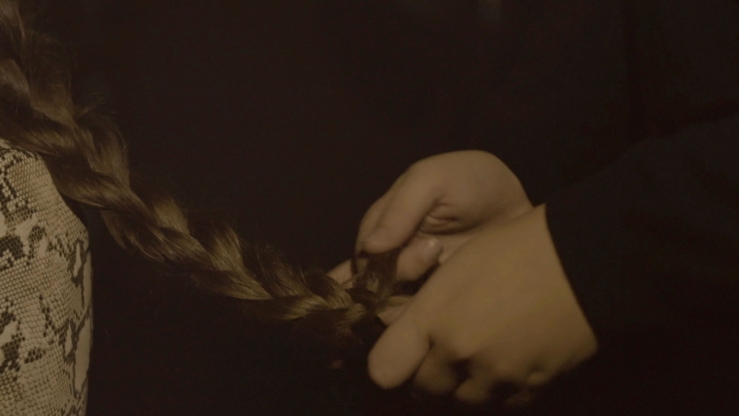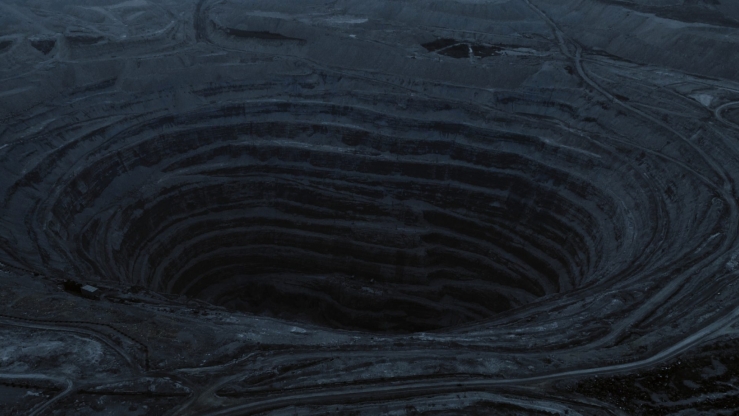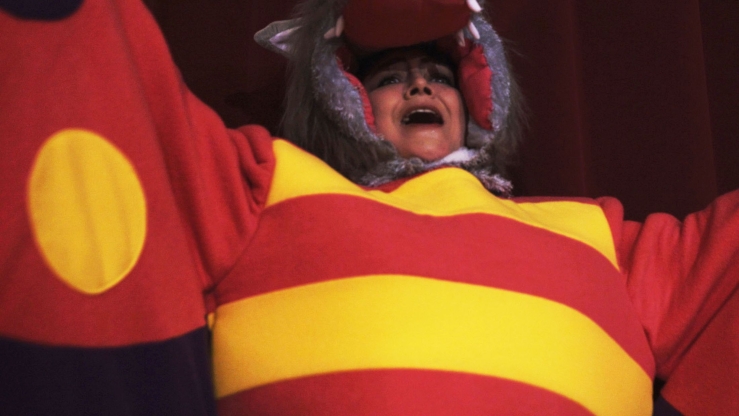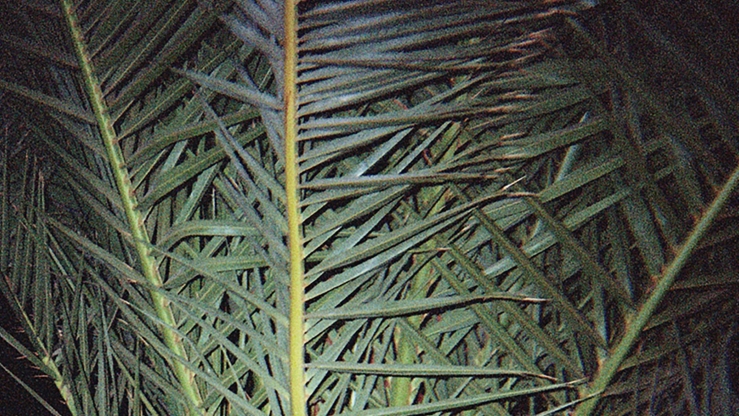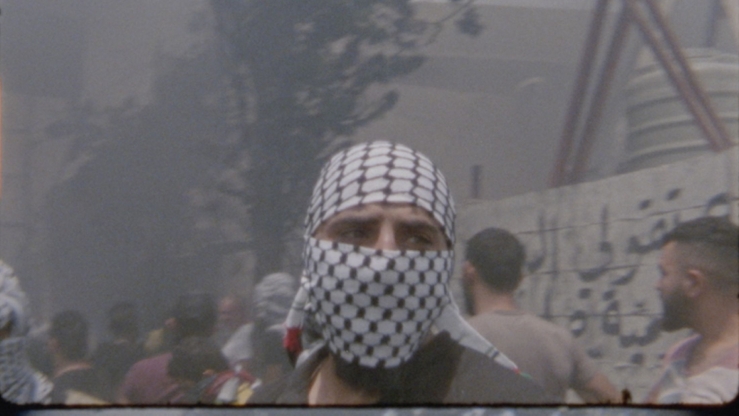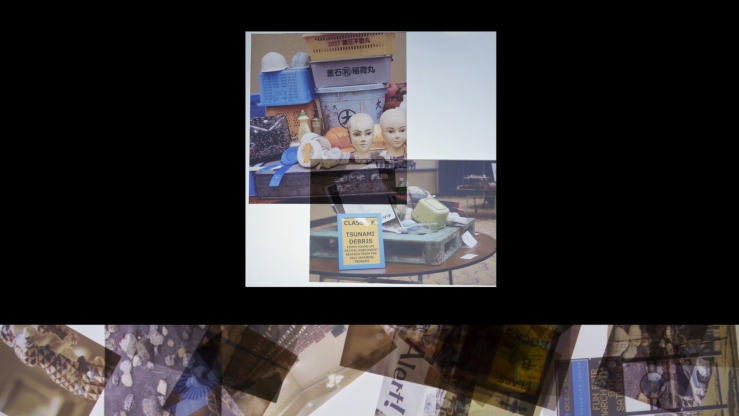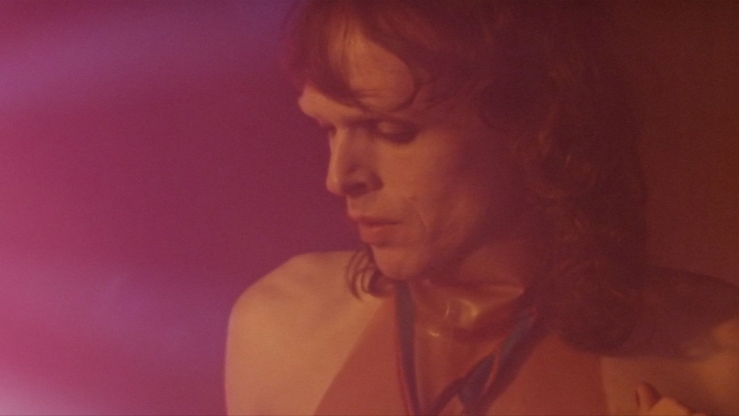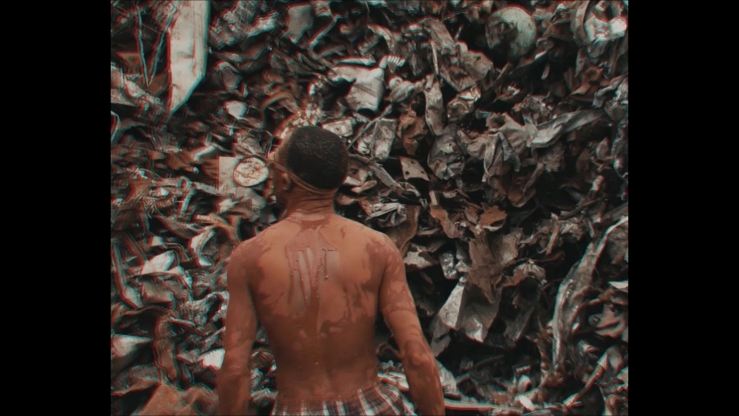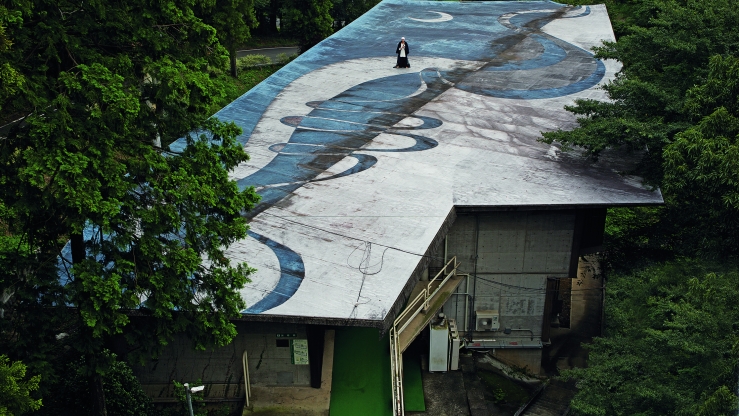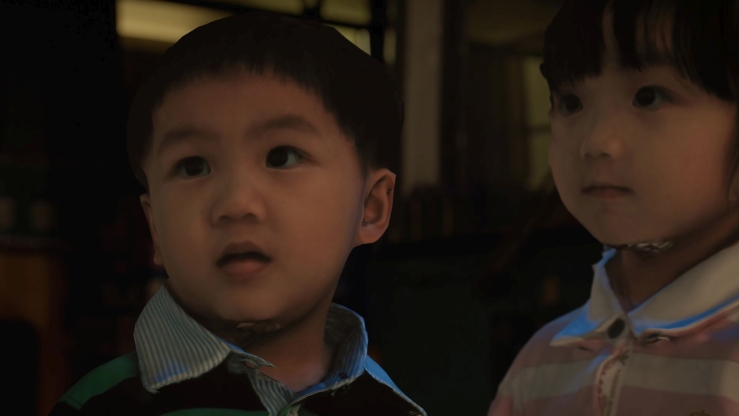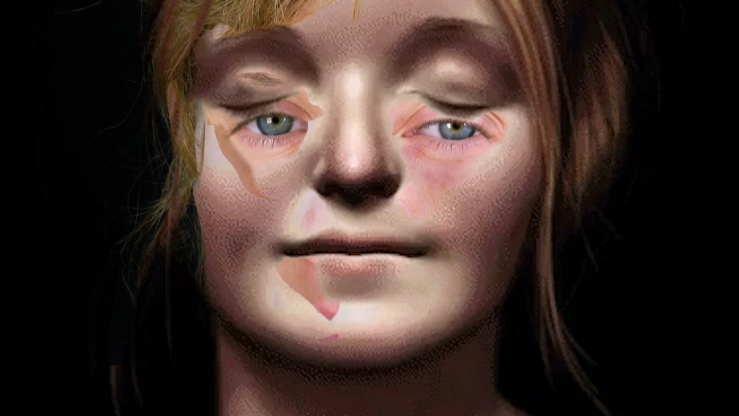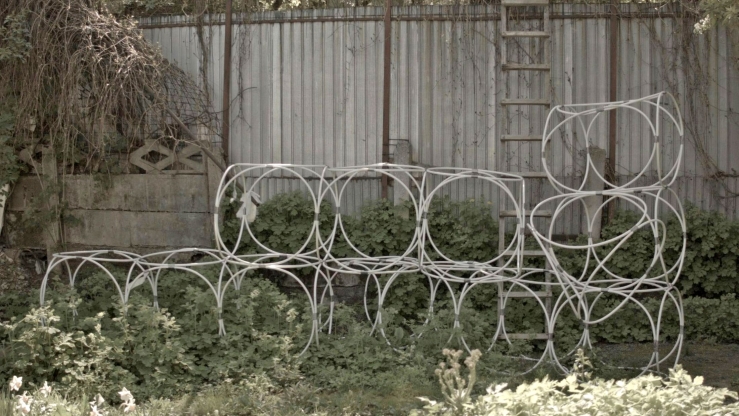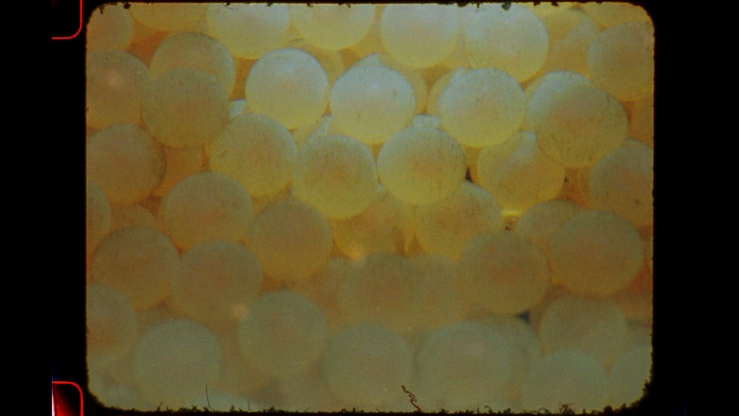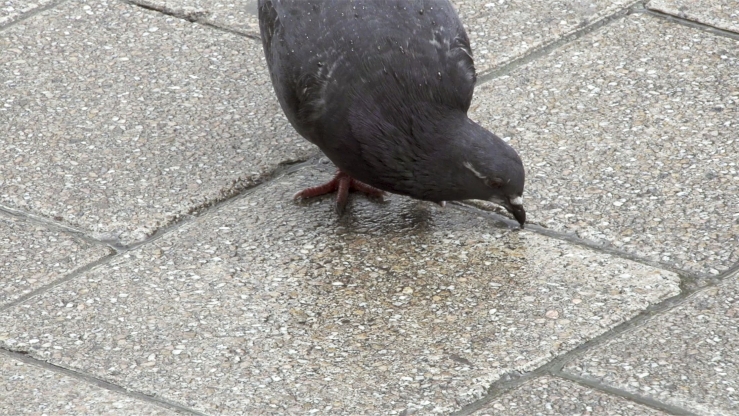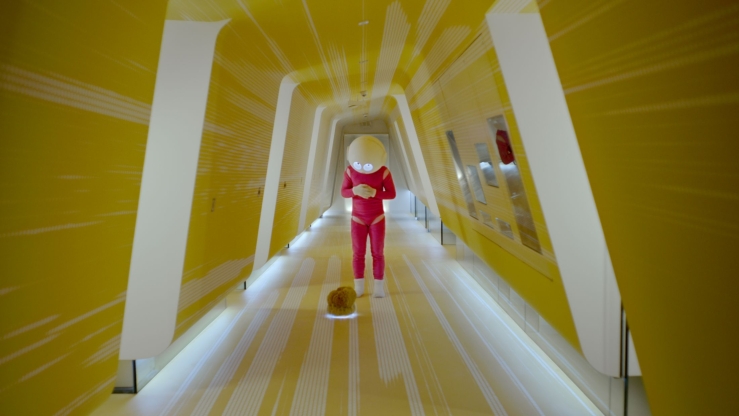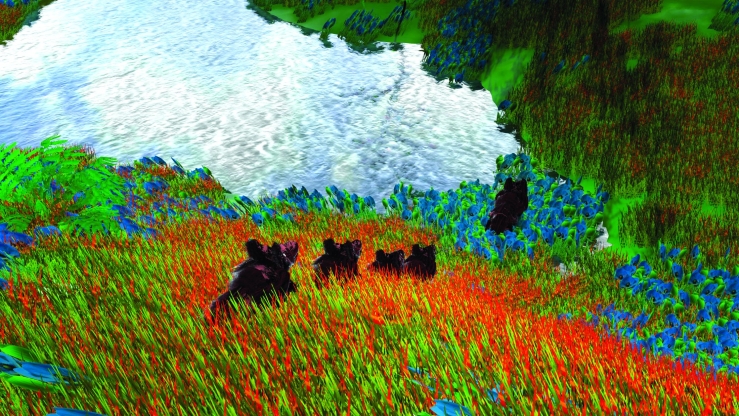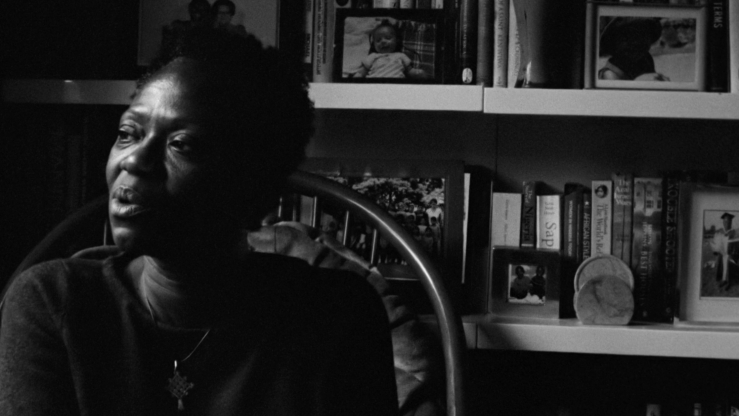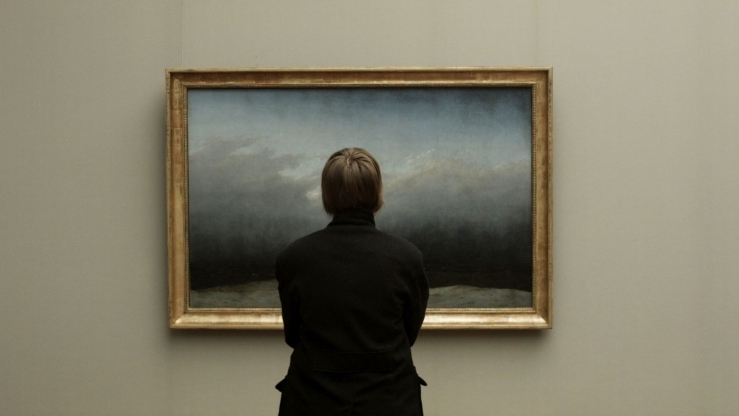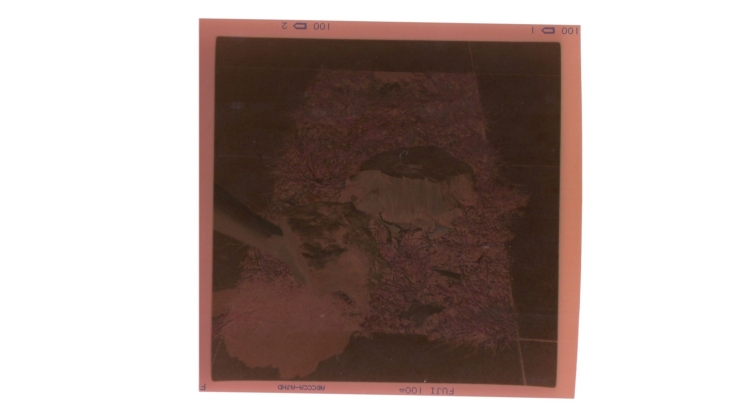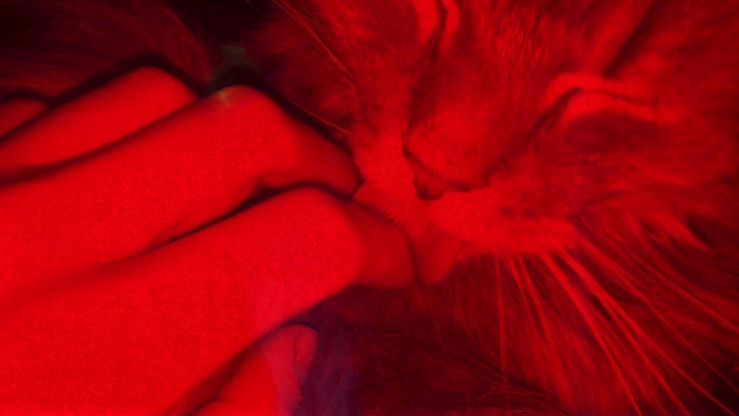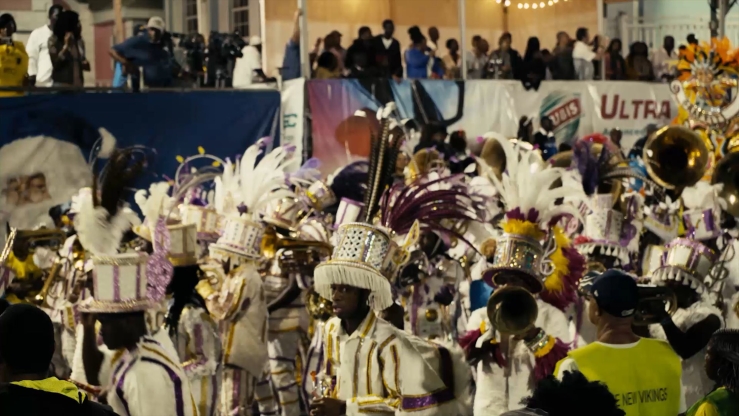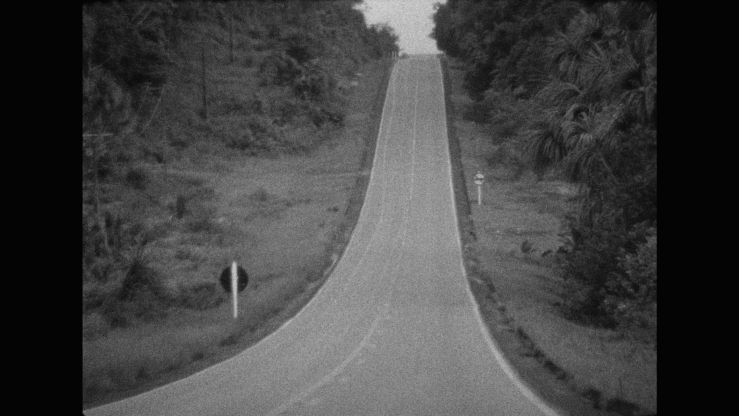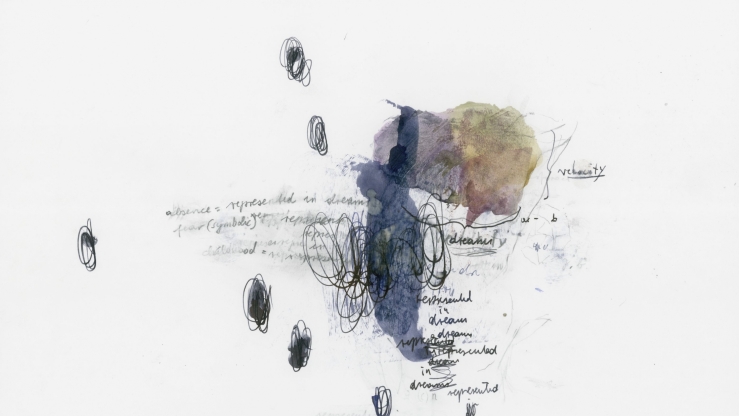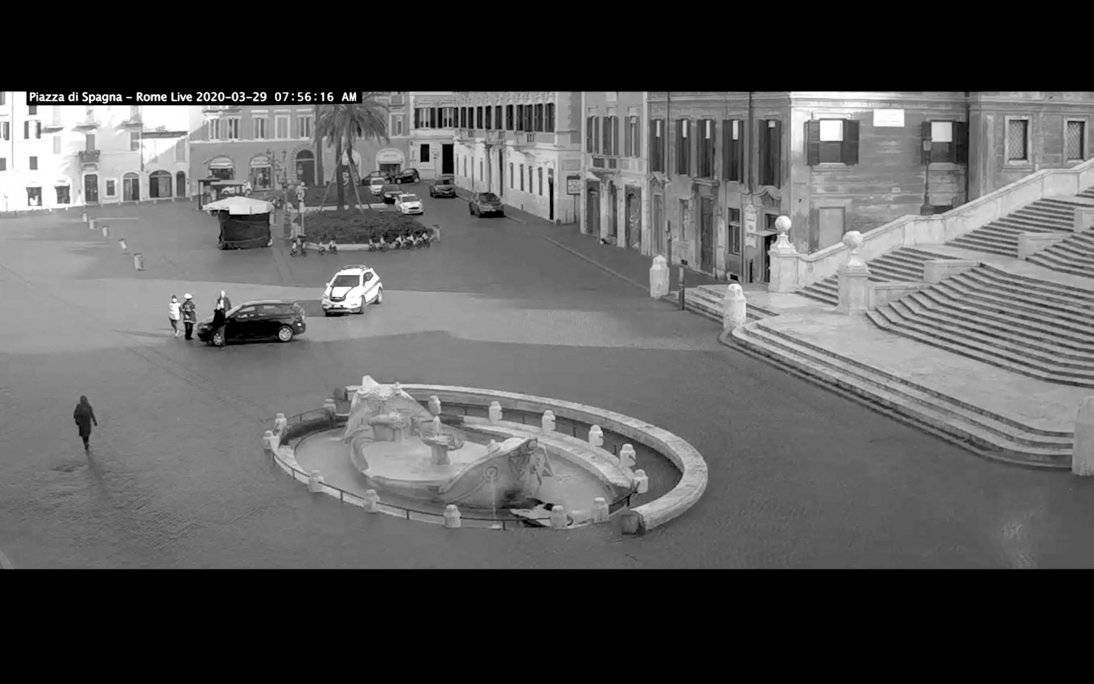
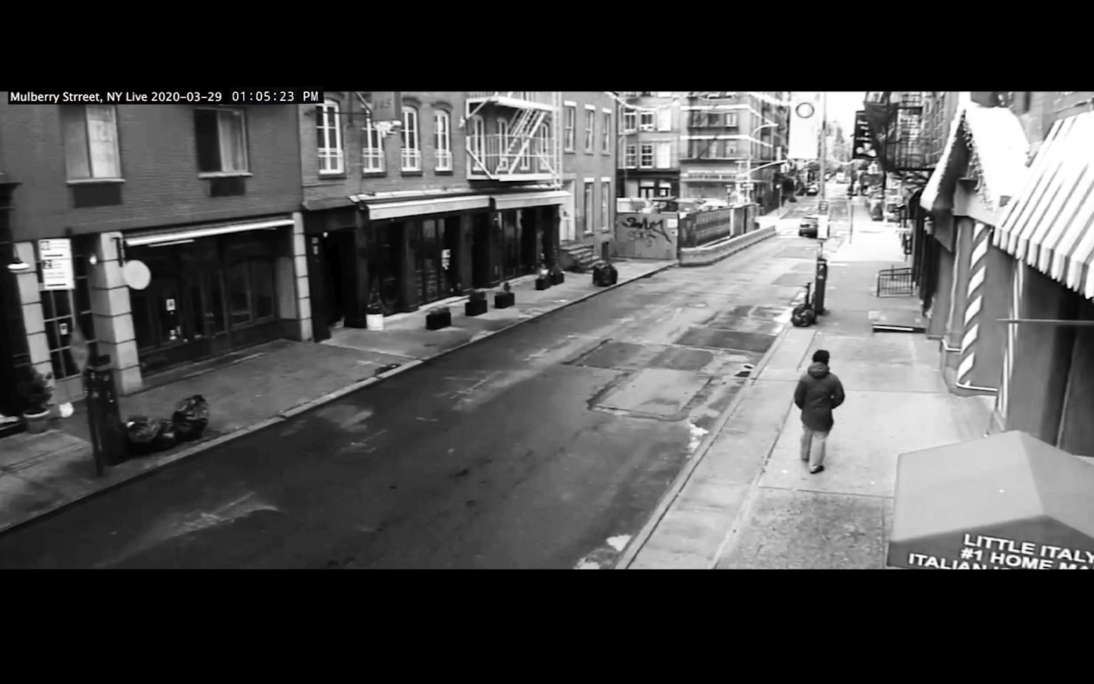
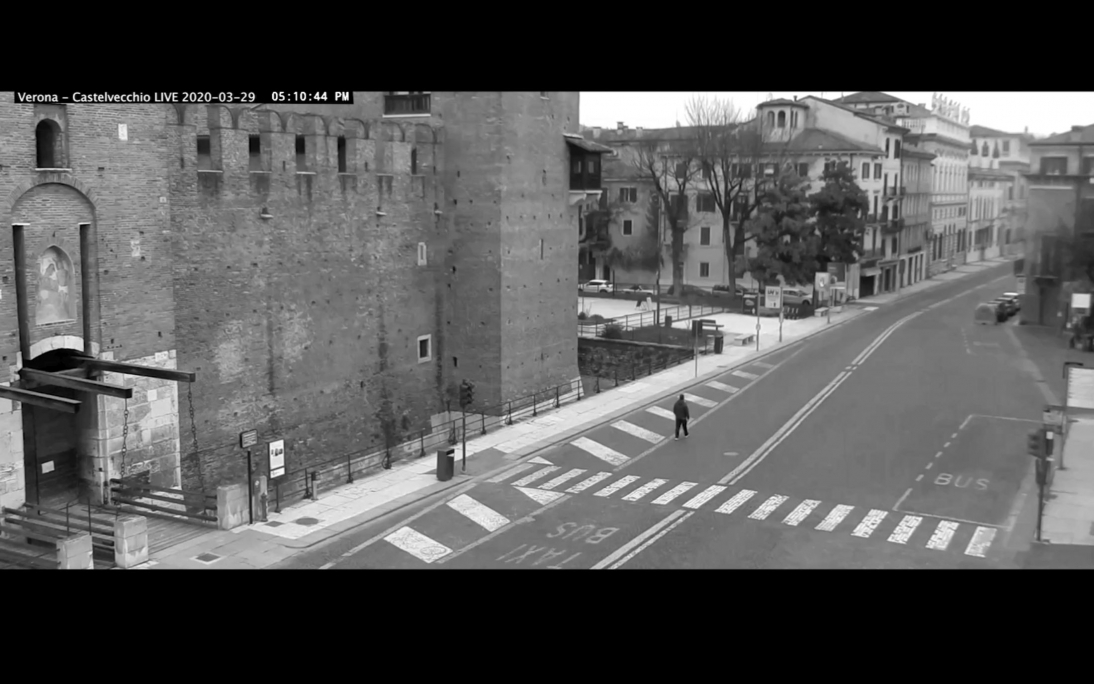
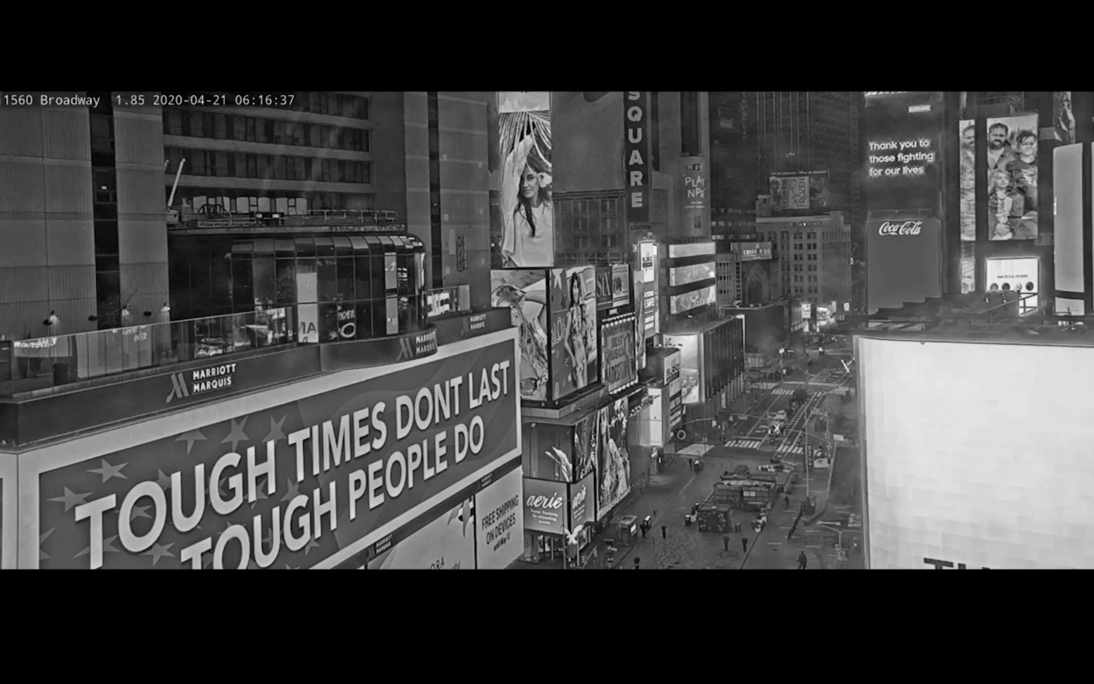
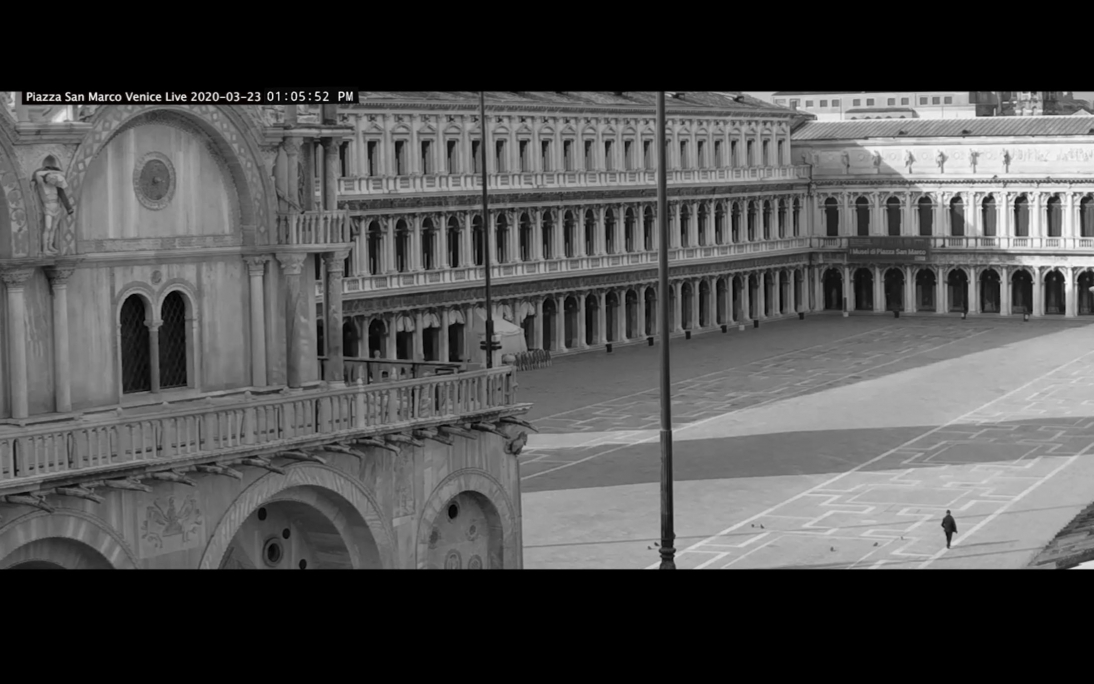
Dana Levy &
The sun rises slowly – in black-and-white on the horizon over a dark forest, then over a skyline of a suburban high-rise settlement. Music, as if from thrillers or horror movies of long past decades already charges the first scenes with excitement. After that, black-and-white surveillance camera aesthetics continue to produce pictures of deserted places that are otherwise always more than busy – the Spanish Steps and Piazza Navona in Rome, the entrance hall of Düsseldorf Airport, a shopping street in Athens, Piazza San Marco in Venice, Broadway and Park Avenue in N.Y.C, a bar in Key West, a main street in Madrid and other, mostly rigid shots from Hollywood, Tokyo, Las Vegas, Taiwan, Santa Monica, Paris, Ukraine, etc. Everywhere you see at most one or two people walking around lost, sometimes they are controlled at roadblocks by military or police guards. Almost all of them are pictures from live webcams from the time of the almost worldwide lockdown during the first wave of the COVID-19 pandemic in spring 2020, which can be seen in the information shown in the picture above. It remains open, however, whether these were inserted by the artist – which would be indicated by the always the same design of the information – or were found like this. There are also photographs from various zoological gardens among them – the animals seem strangely untouched by the threatening atmosphere.
These documentary scenes are interspersed with film and sound excerpts from two post-apocalyptic, black-and-white horror films from the 1960s, from which the background music is also taken. (Last Woman on Earth, Roger Corman, 1960, and The Last Man on Earth, Ubaldo Ragona, 1964). In the latter, a pandemic (!) has caused that except for one single human, all others seem to be dead or mutated to vampires – this one is immune to the pathogen because he was once bitten by an infected bat (!).
The scenes from these films are so skillfully mounted between the current live webcam images, the music and dialogue parts are so precisely underlaid that one does not always notice the transitions immediately, and facts and fiction are squared into the Cinemascope format almost seamlessly. In this way, Last Man skillfully and with great evidence shows us the frightening proximity of our current situation to so far only fictional post-catastrophic narratives – one can and almost does not want to believe it. (Stefan Panhans)
Artist statement
I work in the media of video, photography and installation. My practice is primarily concerned with man’s relationship to nature and the tension between the man-made and natural world. I'm fascinated with the domestication of nature, with classify-ing mechanisms and cataloging – the human instinct to control the environment and to subdue the 'wild'. This duality of the the domesticated, sheltered and organized world - and that which is untamable, is a repetitive theme in my work. My body of work to date reflects an ongoing connection to liminal spaces on the threshold of dream life and reality, wherein the presentation of past and future events might be blurred. In the past decade, my work has focused on the apocalyptic: a sinking civilization caught in the struggle between nature and culture; the vulnerability of mankind and of the world; an imaginary future in the aftermath of humanity and nature’s takeover. (Dana Levy)
* We can only show an excerpt of this work in the online archive. For the complete version, please contact the artist.
Images: Dana Levy, Last Man, 2020 © Dana Levy
By continuing to visit this site, you accept the use of cookies by Matomo Analytics for statistical purposes.
About the Artist
About the Work
By continuing to visit this site, you accept the use of cookies by Matomo Analytics for statistical purposes.
By continuing to visit this site, you accept the use of cookies by Matomo Analytics for statistical purposes.

